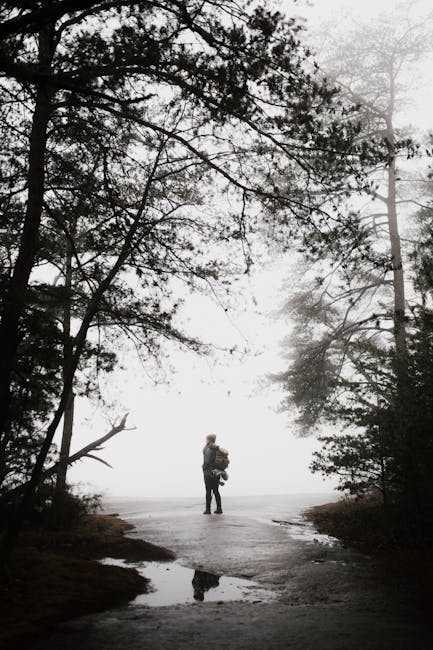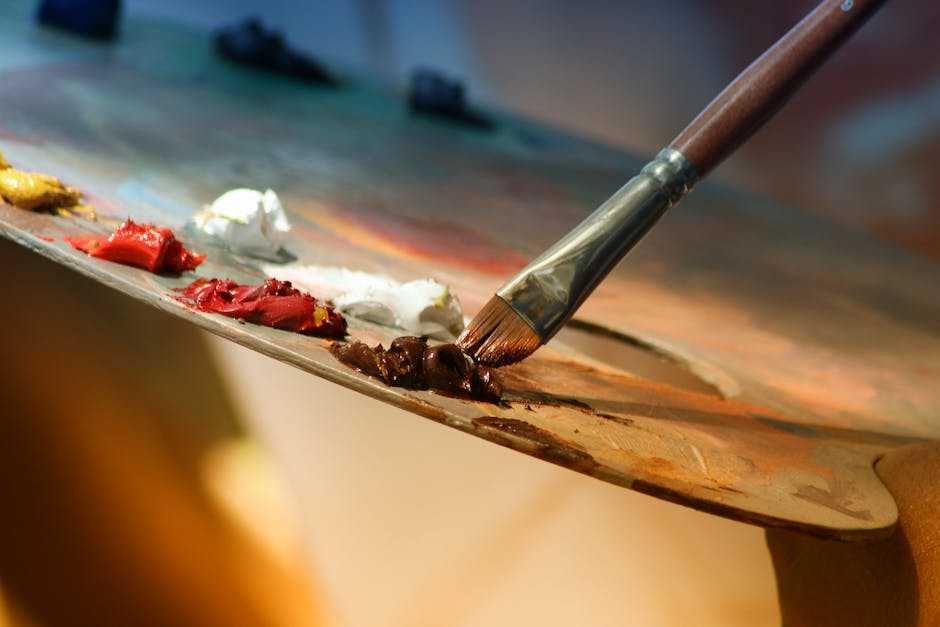Table of Contents
- Exploring the Allure of Waves in Artistry
- Techniques That Bring Ocean Waves to Life
- Choosing the Right Palette for Your Wave Paintings
- Inspiration from Famous Wave Artists and Their Masterpieces
- Q&A
- Future Outlook


Exploring the Allure of Waves in Artistry
The beauty of waves has captivated artists throughout history, inspiring a diverse array of styles and techniques. From the flowing lines of Impressionism to the dynamic forms found in abstract works, the representation of waves is a testament to nature’s power and grace. Artists often find themselves drawn to the rhythmic motion and sparkling hues of the ocean, capturing its essence on canvas with striking results. The texture of waves, the play of light, and the depth of color contribute to a rich visual experience that resonates with viewers.
In contemporary artistry, waves are not merely subjects to be painted; they symbolize emotions and states of mind. Artists utilize color palettes that range from calming blues to tumultuous blacks and whites, reflecting the complex relationship humans have with nature. The motion and energy depicted can evoke feelings of serenity or chaos, making each wave painting a personal interaction between the viewer and the artwork. This emotional connection is often enhanced through various mediums, including oil, acrylic, and watercolor, allowing for unique techniques that showcase movement and depth.
Many artists choose to incorporate mixed media in their wave paintings, blending traditional techniques with modern materials. This innovative approach can introduce surprising elements, such as gravel, sand, or recycled materials, emulating the textures of the shore or the spume of the ocean waves. Each piece serves as both a visual delight and a commentary on environmental issues, reminding the audience of the fragility of our coasts and oceans. Here’s a glimpse of how different artists interpret wave movements:
| Artist | Style | Medium | Key Themes |
|---|---|---|---|
| Hokusai | Ukiyo-e | Woodblock Print | Nature, Transience |
| Monet | Impressionism | Oil Painting | Light, Emotion |
| Hiroshi Yoshida | Shin Hanga | Woodblock Print | Color, Harmony |
| David Hockney | Contemporary | Digital Collaboration | Innovation, Playfulness |
The allure of waves transcends mere aesthetics, inviting artists and viewers alike to delve into deeper reflections about their connections to the sea. Every stroke captures not just the physical attributes of the waves but also the stories and memories they evoke. Special exhibitions dedicated to waves in art shall be continuously celebrated, serving to inspire future generations to explore and express their interpretation of this natural phenomenon. Following the legacy of past masters, modern artists expand on the theme, making waves a timeless source of inspiration.
Techniques That Bring Ocean Waves to Life
Capturing the essence of ocean waves in paintings involves a variety of techniques that breathe life into the artwork. Artists often start with a solid understanding of color theory, using a mix of cool blues, greens, and white highlights to convey the depth and movement of water. Manipulating these colors with blending and glazing techniques allows for a dynamic interplay of light and shadow. This is essential for mimicking the ever-changing nature of waves.
Another effective method is impasto, where thick layers of paint are applied to create texture that mimics the frothy crests of waves. This can be achieved with a palette knife or a stiff brush, offering a three-dimensional quality that draws viewers into the scene. The tactile sensation of raised paint can replicate the tumultuous surface of the sea, making the artwork feel vibrant and alive.
Using a variety of brush strokes is crucial for adding movement and rhythm to wave paintings. Techniques such as hatching, cross-hatching, and stippling can emulate the ripples and swells found in ocean currents. Combining broad strokes for distant waves with finer details for those in the foreground creates a sense of depth that enhances the overall composition. Artists often experiment with different brushes, from fan brushes for smooth waves to bristle brushes for more chaotic swells, ensuring each wave conveys its unique personality.
Furthermore, the incorporation of mixed media can elevate ocean wave paintings to new heights. Artists may use materials such as sand, shells, or even resin to give a tactile quality to their work. These elements can create a multimedia effect that mirrors the beach environment, inviting the audience to experience not just the sight but the feel of the ocean. By layering paints with these materials, artists achieve a rich and immersive experience that captures the spirit of the sea.


Choosing the Right Palette for Your Wave Paintings
When it comes to creating captivating wave paintings, the choice of color palette can make all the difference. While the colors you select may reflect personal preferences, considering the emotional and atmospheric impact of various hues is essential. Cool tones like blues and greens evoke a sense of calm and serenity, perfect for portraying peaceful ocean scenes, while warmer tones such as oranges and reds can lend a sense of energy and movement, capturing the dynamic nature of crashing waves.
It’s also beneficial to think about the composition of your painting. You might wish to create a gradient effect that mimics the natural transition of colors in a seascape. For example, blending deep navy blue at the bottom with lighter sky blues and whites on the surface can mirror the real-life experience of looking at the ocean. Consider using a limited color palette with variations in shade and tone; this approach can unify your artwork and ensure that every element complements the overall scene.
To achieve a balanced composition, consider incorporating an accent color that highlights specific aspects of your wave painting. This could be a bright yellow to indicate sunlight filtering through water or a muted gray to give depth to shadowed areas. Maintaining a harmonious balance between your primary colors and accent shades will create visual interest without overwhelming the viewer. Here’s a brief example of how you might structure your palette:
| Color Type | Example Color | Hex Code |
|---|---|---|
| Base Color | Ocean Blue | #1E90FF |
| Accent Color | Sunset Orange | #FF4500 |
| Highlight Color | White Foam | #FFFFFF |
| Shadow Color | Deep Navy | #000080 |
Ultimately, your choice of color palette should resonate with the feelings and moods you aim to convey through your wave paintings. Experimentation is key, so don’t hesitate to play with different combinations until you find the perfect mix that tells your story. Remember, great artwork often emerges from a balance of intuition, experimentation, and intentionality in your color choices.


Inspiration from Famous Wave Artists and Their Masterpieces
Throughout art history, waves have served as a powerful muse for countless artists, symbolizing both the beauty and turbulence of nature. One notable figure is Katsushika Hokusai, renowned for his iconic woodblock print, “The Great Wave off Kanagawa.” This masterpiece exemplifies the dramatic interplay of sea and sky, with towering waves presenting a striking contrast to the calmness of Mount Fuji in the background. Hokusai’s use of vibrant colors and intricate details captures the sheer might of the ocean, inviting viewers to confront the unstoppable force of nature.
Another remarkable artist, J.M.W. Turner, masterfully depicted waves in his emotive seascapes. His painting, “The Slave Ship,” is a haunting portrayal of tumultuous waters that evokes deep emotional responses. With swirling strokes and intense colors, Turner conveys the chaos of the sea, reflecting both the physical storm and a historical tragedy. His ability to capture light and movement transforms waves into a dynamic narrative element, showcasing the ocean’s integral role in human experience.
In more contemporary art, Wyland specializes in marine-themed murals that celebrate the ocean’s splendor and fragility. His large-scale works often feature dolphins, whales, and vibrant underwater ecosystems, highlighting the beauty of marine life. With his focus on conservation, Wyland’s art not only creates visual appeal but also instills a sense of responsibility towards our oceans. These vivid waves often carry messages of protection and respect for the natural world, inspiring audiences to advocate for environmental awareness.
Another modern visionary, Yoshitomo Nara, incorporates waves into his whimsical yet poignant art. Nara’s iconic imagery of childlike figures juxtaposed with turbulent wave motifs creates a thought-provoking contrast. The waves symbolize life’s challenges, while the central characters evoke innocence, suggesting a narrative of resilience. This merging of styles allows for a deeper understanding of personal and collective experiences in the face of adversity, reminding us that the journey through life’s waves can be both beautiful and daunting.
Q&A
Q&A: Exploring the World of Waves Paintings
Q: What are waves paintings? A: Waves paintings capture the beauty and movement of ocean waves, translating their fluidity and energy onto canvas. These artworks often showcase various styles, from realistic depictions of crashing waves to abstract interpretations that emphasize color and texture.Q: What inspires artists to paint waves? A: The inspiration often stems from the natural beauty of the ocean. Artists are drawn to the dynamic play of light on water, the sound of waves crashing, and the emotions that coastal scenes evoke. Many find that waves symbolize both power and tranquility, making them a versatile subject for artistic expression.
Q: Are there specific techniques used in waves painting? A: Absolutely! Artists may employ techniques such as glazing, impasto, or palette knife application to evoke the sense of movement and depth in the water. Brush strokes can vary; fluid strokes can mimic the gentle rise of a wave, while sharper lines may capture the force of a wave crashing.
Q: What materials are commonly used to create waves paintings? A: Waves paintings can be created with a range of materials, including oil paints, acrylics, and watercolors. The choice of medium often influences the final piece’s texture and vibrancy. Many artists also incorporate mixed media, adding elements like sand or metallics to enhance the oceanic feel.
Q: How do waves paintings differ across cultures? A: Different cultures approach waves paintings with unique perspectives. For example, Japanese art often emphasizes harmony with nature, seen in works like Hokusai’s “The Great Wave off Kanagawa,” which illustrates both beauty and the power of nature. In contrast, Western interpretations may focus more on bold colors and dramatic scenes, showcasing the waves as a metaphor for emotion.
Q: Can waves paintings convey emotions? A: Yes, waves paintings can evoke a wide range of emotions, from calmness and serenity to awe and power. The movement of a wave might reflect the artist’s own feelings or resonate with the viewer’s experiences, making each piece a personal journey.
Q: How can I learn to paint waves myself? A: Start by studying photographs or visiting the beach to observe waves in person. Practice sketching them and then experiment with painting techniques. Online tutorials and workshops focused on seascape painting can provide valuable insights and tips tailored to beginners and advanced artists alike.
Q: Where can I find waves paintings to buy or admire? A: Waves paintings can be found in galleries, online marketplaces, and art fairs. Websites like Etsy, Saatchi Art, and local art collectives frequently showcase a variety of wave-themed artworks by emerging and established artists. Don’t forget to explore local art fairs and exhibitions for unique pieces!
Q: What role do waves paintings play in home decor? A: Waves paintings can serve as stunning focal points in interior design, adding a sense of tranquility to spaces. They can complement coastal themes or provide a splash of color to minimalist settings. Artworks featuring waves often elicit a mood of relaxation and connection to nature, making them popular choices for homes and offices alike.
Q: How has the portrayal of waves in art evolved over time? A: The portrayal of waves has evolved from classical interpretations focused on realism to modern and contemporary styles that experiment with abstraction and emotion. Each era brings new techniques and interpretations, reflecting changes in artistic movements, cultural influences, and advancements in materials. — This Q&A provides an engaging overview of waves paintings, addressing common questions while inspiring a deeper appreciation for this captivating art form.
